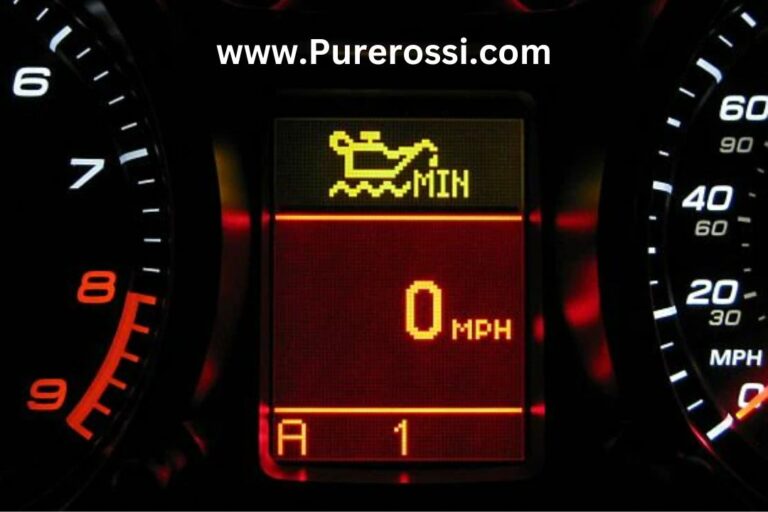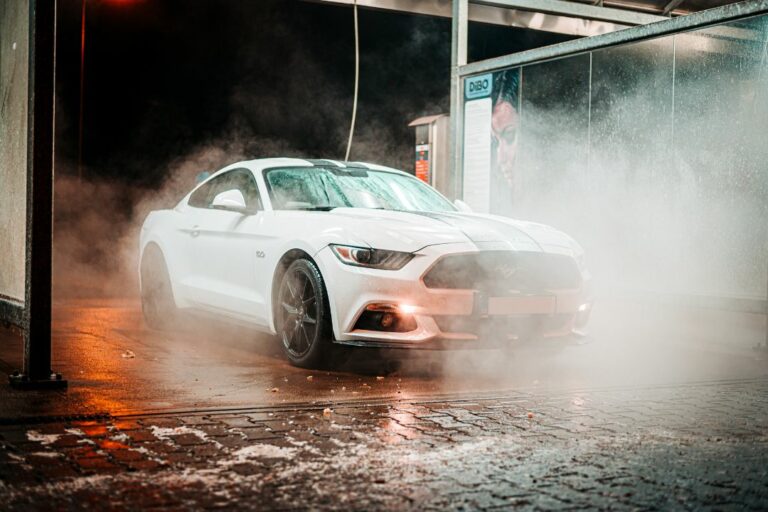Turn Signal Blinks Then Stops (5 Issues 100% Guaranteed Fix!)

There are several possible causes of a Turn Signal Blinks Then Stops – from a faulty flasher relay to bad wiring or even incompatible custom LED headlights.
But don’t worry – we’ve got some tips for you to help diagnose and fix the issue so that your blinkers are back up and running smoothly again.
And if you’re still having trouble after trying these DIY fixes? IPAC Pre-Owned Outlet is here to help with vehicle repair and service for any type of car, truck or SUV – no matter the make or model!
The possible cause of this issue could be a faulty flasher relay located under the dashboard, just right of the steering wheel. The user has checked and found the flasher relay, and jiggled it to make it work. Turn signal issues should not be ignored and should be fixed as soon as possible to avoid putting oneself and other drivers at risk.
Reasons Behind Turn Signal Blinking and Then Stopping:
| Causes | Fixes |
|---|---|
| 1. Burnt-out bulb | 1. Replace the burnt-out bulb |
| 2. Faulty flasher relay | 2. Replace the flasher relay |
| 3. Wiring or connection issues | 3. Inspect the wiring and connections for any faults |
| 4. Faulty turn signal switch | 4. Replace the turn signal switch if defective |
| 5. Fuse-related problems | 5. Check and replace any blown fuses |
| 6. Faulty hazard light switch | 6. Replace the hazard light switch if defective |
| 7. Electrical system issues | 7. Inspect the electrical system for any faults |
1. Burnt Out Bulb
One of the most common reasons behind turn signal blinking and then stopping is a burnt-out bulb.
Over time, lights can gradually grow dim before finally burning out completely. This isn’t just a problem for turn signals – it’s something that can happen to any light on your vehicle.
When you experience an issue with your turn signal, one of the first things you should do is check the bulbs. If you notice that one or both of the bulbs have burnt out, simply replace them with new ones. This simple fix could be all it takes to get your blinker up and running again.
It’s important to note that using incompatible custom LED headlights could also cause rapid blinking in some vehicles. If this is the case, replacing them with compatible parts may solve the issue.
Don’t ignore issues with your turn signals – they are essential for safe turning and lane changes while driving on roads!
2. Faulty Flasher Relay
If your turn signal blinks a few times and then stops, one possible cause could be a faulty flasher relay. The flasher relay is an electrical component that controls the turn signals, hazard lights, and other similar functions in your vehicle.
A faulty flasher relay can cause issues with the turn signal circuit, leading to problems such as rapid blinking or no blinking at all.
If you suspect that the issue with your turn signals is related to the flasher relay, you can locate it under the dashboard just right of the steering wheel where it should be labeled.
To troubleshoot this possible issue:
- Check if the flasher relay is loose or corroded
- Jiggle it gently to see if this resolves the problem momentarily
- If jiggling doesn’t work for long, replace it
It’s important not to ignore any issues with your turn signals because these lights indicate when you’re turning or changing lanes on the road.
Ignoring a malfunctioning blinker puts yourself and other drivers at risk and possibly getting a ticket if stopped by law enforcement officers.
If replacing your own parts isn’t something you’re comfortable doing yourself IPAC Pre-Owned Outlet offers vehicle repair services from experts who are experienced in fixing any kind of vehicle regardless of make or model.
3. Electrical Problems
If your turn signal blinks and then stops, it could be due to electrical problems. These issues could stem from a malfunction in the wiring or circuit of your vehicle.
In such cases, it would be best to get professional help immediately as these problems can lead to more significant issues if left unchecked.
When dealing with electrical problems, it’s crucial to check for the exact spot where the problem is originating.
One possible issue could be a faulty flasher relay that has burnt out or is not functioning correctly. Other common culprits include corroded connectors or short-circuited wires.
To diagnose and fix electrical problems in your turn signals, you need knowledge of car circuits and wiring systems. It’s usually best to bring your vehicle into an auto repair shop who specialize in fixing these types of issues.
4. Malfunctioning Multifunction Switch:
Another possible cause of turn signal blinking and then stopping is a malfunctioning multifunction switch.
This switch controls various functions in your vehicle, including turn signals, headlights, and windshield wipers.
If the switch is malfunctioning, it could cause issues with the turn signal circuit, leading to problems such as rapid blinking or no blinking at all.
To troubleshoot this possible issue, you can check the switch for any visible damage or wear and tear.
If you suspect that the issue with your turn signals is related to a malfunctioning multifunction switch, it’s best to bring your vehicle into an auto repair shop to have it replaced by a professional.
5. Corroded Connectors:
Corroded connectors can also cause turn signal blinking and then stopping. These connectors can become corroded over time due to exposure to moisture or other environmental factors.
To diagnose this problem, you can examine the connectors for any visible signs of corrosion or rust. If you find any, clean them with a wire brush or sandpaper and apply dielectric grease to prevent further corrosion.
If cleaning the connectors doesn’t solve the issue, it’s best to bring your vehicle into an auto repair shop to have a professional diagnose and fix the problem.
Troubleshooting Turn Signal Blinking and Stopping:
If your turn signal blinks and then stops, it’s important to troubleshoot the issue before it becomes a major problem. Here are some steps you can take to diagnose the potential causes:
1. Check the Bulbs
A burnt-out bulb can cause your turn signal to stop blinking or not blink at all. Inspect both the front and rear lights for any signs of damage or wear and replace as necessary.
2. Inspect the Flasher Relay
The flasher relay is responsible for controlling the rate of your turn signals’ blinking. If this component is faulty, it could be causing your issues. Locate the flasher relay under your dashboard (usually on the driver’s side) and inspect it for signs of damage or corrosion.
3. Look for Electrical Problems
An issue with your vehicle’s electrical circuitry could be preventing proper power from reaching your turn signal lights, causing them to stop blinking mid-cycle.
4. Inspect the Multifunction Switch
If you’ve checked the bulbs, flasher relay, and electrical connections and found no issues, it’s time to inspect the multifunction switch. The multifunction switch is what controls your turn signals, along with other functions like headlights and windshield wipers.
One possible issue with the multifunction switch is wear and tear over time. If your turn signal blinks then stops intermittently or doesn’t work at all, it could be a sign that the contacts inside the switch are worn out or corroded.
To inspect the multifunction switch:
- Locate its position in your vehicle manual or online.
- Remove any covers that may be obstructing access to the switch.
- Check for any signs of burnt connectors or melted plastic around wires connected to it.
- Use a multimeter to test if power is being supplied properly from every circuit on both sides of each contact point.
If there’s an issue detected in this inspection process as well then you should consider seeking professional help as soon as possible so that they could identify if there’s another problem within your car’s electrical system causing these problems while turning signals On/Off .
5. Check for Corroded Connectors
Corrosion around connectors can interfere with power transfer between battery components and vehicle systems – check all connections leading into/out of light fixtures that aren’t working properly as fix any corrosion you come across.
How to Prevent Turn Signal Blinking and Stopping?
Preventing turn signal blinking and stopping issues is critical as it helps avoid potentially hazardous situations on the road. Here are some tips to help you prevent turn signal problems:
1. Regular Maintenance:
One of the simplest ways to prevent turn signal problems is through regular maintenance. Check your bulbs, flasher relay, switch, and other relevant parts frequently. If you notice any damage or wear and tear, replace them immediately.
2. Correct Installation
Correct installation is a crucial step to ensure that your turn signals function properly and consistently. Installing the wrong type of bulb or installing bulbs incorrectly could lead to issues with your turn signal blinking and stopping.
When replacing bulbs, make sure you’re using the correct type for your vehicle as suggested in the owner’s manual. Ensure that they are correctly seated into their sockets and tightly secured.
If you’ve recently installed new custom LED headlights, it’s possible that they are not compatible with your vehicle’s electrical circuit, causing issues with rapid blinking or no blinking at all. It’s important to check if these lights are appropriate for your car before installation.
In some cases, incorrect wiring during installation may cause issues with turn signals as well.
If unsure about how to install any parts related to the turn signal system on your vehicle, seek professional help from a mechanic or electrician who has experience working on automotive electronics.
By ensuring proper installation techniques are used when replacing bulbs or other components related to the turn signal system of your vehicle can go a long way in preventing problems such as erratic blinking behavior or total lack of illumination of turning signals.
3. Use Quality Parts
When it comes to preventing turn signal issues, using quality parts is key. Cheap or poorly made parts can fail more quickly than their higher-quality counterparts, leading to the need for costly repairs down the line.
When replacing bulbs or other components in your turn signal circuit, make sure to choose high-quality options that are specifically designed for your vehicle. This will help ensure that they are compatible and will last for as long as possible.
In addition to using quality parts, following proper installation procedures is also important. Make sure that all connections are secure and that wiring is properly routed and protected from damage.
By taking these steps, you can help prevent turn signal issues from occurring in the first place and keep your vehicle’s signaling system running smoothly.
If you do experience any problems with your turn signals, be sure to address them promptly using the troubleshooting tips outlined earlier in this article or seek professional help if necessary.
Conclusion:
Turn signal blinking and then stopping can be a frustrating and potentially dangerous issue.
The reasons behind this problem can range from a burnt-out bulb to faulty wiring or a malfunctioning multifunction switch. It’s important to diagnose and fix the issue as soon as possible to avoid any safety hazards on the road.
Regular maintenance, correct installation, and using quality parts can help prevent turn signal issues from occurring in the first place.
If you do experience any problems with your turn signals, don’t ignore them and address them promptly using the troubleshooting tips outlined in this article or seek professional help if necessary.






